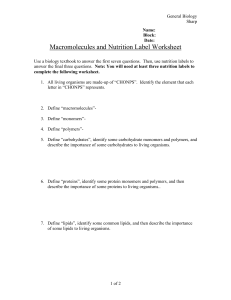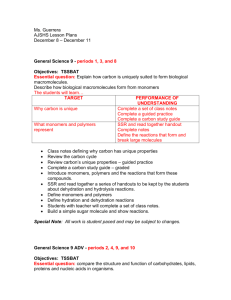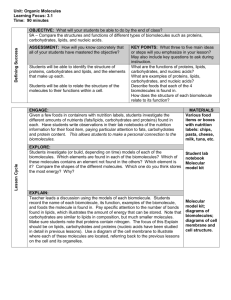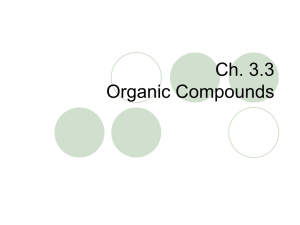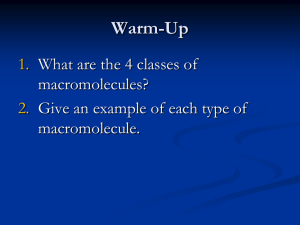Unit 1 Biochemistry Review List the 4 biolmolecules List the
advertisement
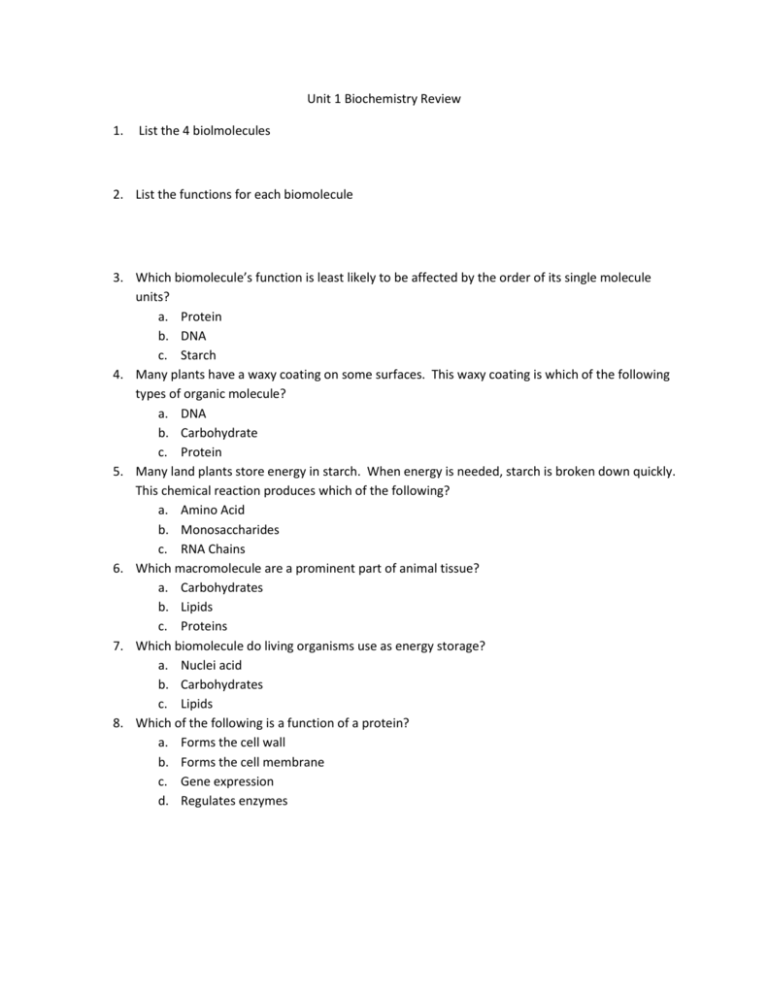
Unit 1 Biochemistry Review 1. List the 4 biolmolecules 2. List the functions for each biomolecule 3. Which biomolecule’s function is least likely to be affected by the order of its single molecule units? a. Protein b. DNA c. Starch 4. Many plants have a waxy coating on some surfaces. This waxy coating is which of the following types of organic molecule? a. DNA b. Carbohydrate c. Protein 5. Many land plants store energy in starch. When energy is needed, starch is broken down quickly. This chemical reaction produces which of the following? a. Amino Acid b. Monosaccharides c. RNA Chains 6. Which macromolecule are a prominent part of animal tissue? a. Carbohydrates b. Lipids c. Proteins 7. Which biomolecule do living organisms use as energy storage? a. Nuclei acid b. Carbohydrates c. Lipids 8. Which of the following is a function of a protein? a. Forms the cell wall b. Forms the cell membrane c. Gene expression d. Regulates enzymes 9. The compound above represents which biomolecule? 10. A biomolecule that is a large complex set of chains composed of alternating subunits called nucleotides has what function in the cell? 11. Illustrate the biomolecule that represents the building block containing information for selfreplicating life? Monomer Polymer X Proteins Nucleotide Nucleic Acids Monosaccharide Carbohydrates 12. Complete the chart by identifying the correct monomer at X. 13. What complex biological molecule results from connected units of this building block a. Protein b. Carbohydrate c. Lipid d. Nucleic acid 14. What is the correct relationship between monomers and polymers? A Monomers are macromolecules: polymers are micromolecules B Monomers are subunits of polymers. C Monomers are long, connecting chains of polymers. D Monomers are larger, more complex versions of polymers. 15. Several of these molecules connected in a chain result in a/ana. Starch b. Sugar c. Nucleic acid 16. What are the 3 components that make up a nucleotide? 17. The enzymes that catalyze cellular reactions are macromolecules made of organic compounds composed of carbon, hydrogen, oxygen, and nitrogen. These types of macromolecules are known asa. Carbohydrates b. Lipids c. Proteins d. Nucleic acid 18. Starches are considered to be what type of biomolecule? 19. Monosaccharide is to polysaccharide as A) fatty acid is to protein. B) nucleic acid is to protein. C) amino acid is to protein. D) amino acid is to lipid. 20. What type of bond is needed to join amino acids together to make a protein? A) Hydrogen bond B) Ionic bond C) Covalent bond D) Peptide bond
